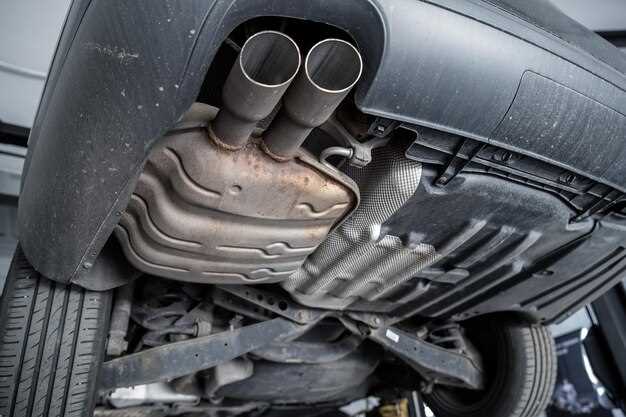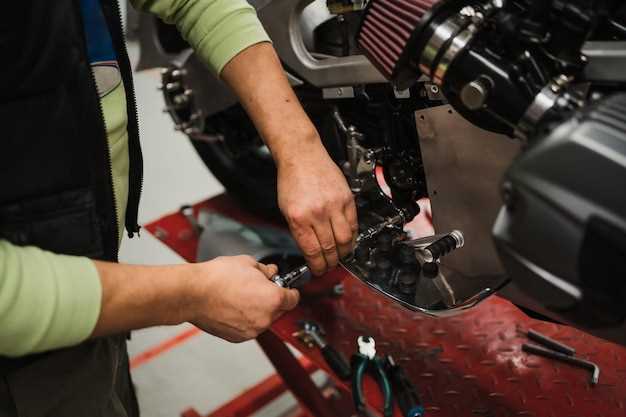
When it comes to enhancing your vehicle’s performance, selecting the right performance exhaust system is a critical step that can transform your driving experience. A well-chosen exhaust system can improve engine efficiency, increase horsepower, and provide that distinctive sound that enthusiasts crave. Whether you’re a casual driver looking to boost your car’s performance or an off-road warrior seeking to conquer rugged terrains, understanding the various aspects of exhaust systems is essential.
The right exhaust system can significantly influence your vehicle’s power delivery and fuel efficiency. Different types of systems cater to a variety of needs, especially for off-road enthusiasts who require durability and a higher level of performance under challenging conditions. Factors like material, design, and diameter play vital roles in how effectively the system can expel exhaust gases, ultimately impacting your vehicle’s overall capability.
In this article, we’ll guide you through the process of selecting the perfect performance exhaust system for your needs. From understanding the benefits of different materials like stainless steel versus aluminized options to evaluating how specific designs affect sound and performance, we will provide you with the information necessary to make an informed decision. Whether you’re navigating city streets or tackling rugged trails, the right exhaust system can enhance not just your vehicle’s function but also your driving enjoyment.
Understanding the Benefits of Upgrading Your Exhaust System
Upgrading your exhaust system can yield numerous advantages, particularly for off-road enthusiasts. A high-performance exhaust enhances engine efficiency by reducing back pressure, which allows for better airflow. This increase in airflow can lead to improved horsepower and torque, translating into enhanced performance during both on-road and off-road activities.
Another benefit is the weight reduction associated with many aftermarket exhaust systems. Factory-installed exhausts can be bulky, adding unnecessary weight to the vehicle. A lighter exhaust system not only improves performance but also contributes to better fuel efficiency, allowing drivers to get more out of each tank of gas.
Sound is also a significant factor when considering an upgrade. Many performance exhaust systems provide a deeper, more aggressive tone that appeals to vehicle owners looking to enhance their off-road experience. This improved acoustics can make driving more enjoyable and instill a feeling of power while navigating rugged terrains.
Additionally, an upgraded exhaust system can positively impact the overall durability of your vehicle. Quality aftermarket exhausts are often constructed from higher-grade materials, offering better resistance to rust and corrosion. This durability ensures that your exhaust system will withstand the rigors of off-road driving conditions.
Lastly, a fresh exhaust system can also improve the vehicle’s appearance. Many aftermarket options feature sleek designs that can give your vehicle a more aggressive look, making it stand out on the trails or at the track. This combination of performance, sound, durability, and aesthetics makes upgrading your exhaust system a worthwhile investment for any serious off-road vehicle owner.
Key Considerations for Off-Road Performance Exhaust Options

When upgrading your vehicle’s exhaust system for off-road performance, several key factors need careful consideration. The right exhaust can enhance your vehicle’s power, improve fuel efficiency, and result in a more aggressive sound, but it must be tailored to meet the unique challenges of off-road driving.
1. Material Quality: Opt for high-quality materials such as stainless steel or aluminized steel to ensure durability and resistance to rust and corrosion. Off-road environments expose your exhaust to mud, rocks, and moisture, making material selection critical for longevity.
2. Exhaust Flow: A well-designed exhaust system typically features larger diameter pipes that reduce backpressure. This is essential for off-road driving, as optimally flowing exhaust can significantly boost engine performance, allowing for improved torque and horsepower.
3. Placement and Clearance: During off-road excursions, your vehicle can encounter rugged terrain. It’s important to select an exhaust system designed for greater ground clearance to avoid damage. Systems that include high-clearance routing are ideal, reducing the risk of getting hung up on rocks or obstacles.
4. Sound Preference: Off-road enthusiasts often appreciate the aggressive growl that performance exhaust systems provide. However, keep in mind that your exhaust choice can significantly affect sound levels. Ensure that the system matches your preferences while complying with local noise regulations.
5. Compatibility with Modifications: If you have previously upgraded other performance parts, such as air intakes or turbochargers, ensure that your new exhaust system is compatible. A cohesive setup maximizes efficiency and performance gains.
6. Installation: Consider whether you will perform the installation yourself or hire professionals. Some exhaust systems may require specific tools or skills that could necessitate seeking expert assistance for optimal results.
In summary, choosing an off-road performance exhaust system requires careful attention to material quality, exhaust flow, placement, sound preferences, compatibility, and installation. By addressing these key considerations, you can enhance the off-road experience of your vehicle effectively.
How to Select the Right Material and Design for Durability

When choosing a performance exhaust system, material and design play crucial roles in ensuring durability, particularly for off-road vehicles. The harsh conditions of off-road driving can place significant stress on exhaust components, making it essential to select materials that can withstand extreme temperatures and abrasive environments.
Stainless steel is one of the most popular materials for performance exhaust systems due to its resistance to corrosion and high temperatures. Look for 304 stainless steel, which offers excellent durability and longevity. Some manufacturers also use 409 stainless steel, which is more affordable but may not provide the same level of resistance in all conditions. If you often find yourself driving in muddy or sandy terrain, ensuring that the exhaust system is made from high-grade stainless steel can significantly enhance its lifespan.
Another material option is aluminized steel, which is coated with aluminum to provide some level of corrosion resistance. While this material is lighter and less expensive, it may not hold up as well in extreme off-road conditions compared to stainless steel. If your off-road adventures are infrequent or mild, aluminized steel may be acceptable, but for serious off-road enthusiasts, investing in a more robust material is advisable.
The design of the exhaust system also contributes to its overall durability. A system with mandrel bends allows for smoother airflow compared to crush-bent pipes, reducing back pressure and heat buildup. Additionally, look for systems with reinforced hangers and brackets, which can withstand the jarring impacts common in off-road environments. A well-designed exhaust will not only improve performance but also reduce the risk of damage due to vibration and movement.
Lastly, consider the welding techniques used in the system. TIG welding is generally preferred for performance exhaust systems, as it creates stronger and cleaner welds compared to MIG welding. Stronger welds are less likely to fail over time, ensuring that your exhaust system remains intact even under tough off-road conditions.
By carefully selecting the right materials and designs, you can ensure that your performance exhaust system remains durable and reliable, enhancing your off-road experience while maximizing engine performance.
